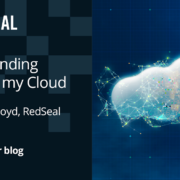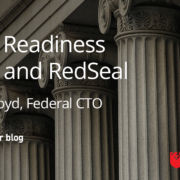Where is the new “Security Stack” hiding?
Security challenges resulting from migrating the security stack to the cloud
The days of the traditional security stack are numbered, brought on by the maturity of shared resource computing and the rapid migration to the public cloud due to the COVID-19 pandemic. This blog will explore a brief history of fortification, its impact on the early internet security architectures, and today’s challenges. I’ll conclude with a few suggestions that every security professional should consider.
From the beginning, cave dwellings were used to protect that of value. Humans have long considered, planned, and implemented various fortification methods. A city wall built around valuable, trusted assets is commonplace from our very early history. Fortification walls were used to protect individuals, tribes, and countries and could be made more secure by adding additional layers. The extra layers of defense increased the protection by the means known as “defense in depth” whereby a compromise in one other layer would sufficiently hinder further advancement or retreat by the attacker.
Fast forward to the late 20th century, many Request for Comments (RFC) drafted, outlined the internet foundation by focusing on moving datagrams from point A to point B. The primary concern was redundancy, resiliency, and reliable delivery of information. However, in the last few years of the 20th century, three essential security concepts were explored: confidentiality, integrity, and availability, known as the “CIA Triad.” Think of CIA as security that attempts to ensure information from the sender can:
- only be read by the receiver
- while in transit, the data has not been changed or tampered with
- the information reaches the intended audience
The 21st century brought a flurry of security and technologies based on ancient, fortified city walls. These defense in depth architectures often made the incorrect assumption that data inherited implicit trust based on location. For instance, data inside a corporate network was not scrutinized equally to data outside the corporate network. These initial security tools – the “Security Stack” – were often placed at the ingress/egress points of the network to inspect, analyze, prioritize, route, and scan for nefarious activities or threats from outside the network perimeter.
The problem with relying on perimeter-based security alone is people. People have always been migratory, traveling beyond the city walls. Speaking for myself, I have worked remotely, assisting companies with network security for 20+ years. As a “road warrior”, my network connections are from hotels, public hotspots, and client networks that have traversed untrusted networks. To prevent unauthorized access, my company had had to apply additional security controls to allow me to be connected successfully behind the “security stack.”
Between 2006 and 2010, the concept of shared computing resources took hold, and the promise of more computing power for less cost fueled a steady adoption rate over the next decade. Cloud service providers (CSPs) like Amazon, Microsoft, Google, Oracle, and others saw a steady, predictable increase in the use of shared resources located within a CSPs network, A.K.A “Public Cloud Network.” However, with the advent of cloud computing, the lines between trusted and untrusted networks were further obscured, and the need for visibility into and across disparate networks became more evident.
2020 brought with it a pandemic that forced hundreds of millions of employees to connect from untrusted sources and work remotely, in many cases bypassing the traditional security stacks intended to provide defense in depth. Corporations faced an unforeseen lack of visibility and conventional tools failed. This rapid migration of corporate workloads (applications) to cloud computing combined with a disintegration of the traditional security stack has resulted in an environment of ever-increasing attacks and ransomware.
Post pandemic, the traditional security stack has dispersed. Some components still reside in on-premises networks, some in the public/private clouds, some at the network perimeter edge, and some on the endpoint device. The critical lesson is that the “edge” is no longer the boundary of location. The new “edge” is now the boundary of information. Data is the new edge.
To achieve security in modern networks, visibility is now more critical than ever. Complex architectures based on, IaaS, PaaS, SaaS, and On-Premises resources combined with new wide-area transport systems like SD-WAN, and a myriad of security filters in the form of cloud regions, accounts, VPC/VNETs, Network ACLs, Security Groups, and tools like SASE (Secure Access Service Edge), and Transit Gateways are indeed the new modern “Security Stack.” To secure this modern-day infrastructure, the corporation needs unparalleled visibility, awareness of where vulnerabilities exist, and connectivity across all network clouds and on-premise.
Finally, here is a message for the CISO or security professional searching for solutions. Ask yourself the following questions and seek answers for any you are unsure of.
- How well do your security teams understand cloud inventory?
- How do you check to see if resources are unintentionally exposed to the internet?
- How do you validate cloud segmentation policies and remediate them?
- How do you prioritize vulnerabilities in a public cloud environment?
For tips on how to “Safeguard Your Cloud Journey with a Comprehensive Security Solution” download our data sheet.



